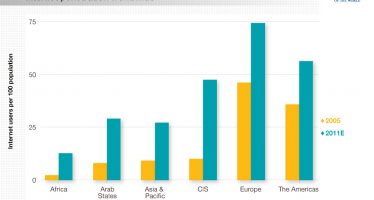There’s an App for That…
Is the universal digitalisation of services turning consumers into unpaid admin staff?
With a mobile application available for almost every conceivable task, are our lives becoming easier by the day?

You might (unthinkingly) think so, if that isn’t a contradiction. But consider the apocryphal case of a young woman trying to rectify an inconsistency in her power bill. She anticipates a straightforward call with a customer-service rep, but finds herself lost in a labyrinthine array of options, FAQs and troubleshooting tips on the company app.
She ends up dedicating a considerable chunk of her day, resolving – by herself, for herself – a problem due to a company error. One that would traditionally have been taken care of by an upbeat professional with a good telephone manner.
This encapsulates a fundamental flaw in the drive to digitalisation. Despite the promised ease-of-use, our growing dependence on digital platforms puts the burden of admin on the shoulders of the user.
“Despite the promised ease-of-use, our growing dependence on digital platforms puts the burden of admin on the shoulders of the user.”
Essential service providers, such as banks and healthcare institutions, have undergone a rapid shift and now keep their customers at one remove. Although the tech is supposed to provide smoother customer experiences, we, the punters, are now required to troubleshoot, manage, and resolve difficulties for ourselves.
Is that fair…?
Digital Evolution
Look at the plethora of digital platforms and apps that have become available – or obligatory – over the past two decades. From the dinosaur days of analogue to the shift to digital in the early noughties, progress was driven by the advent of high-speed internet – and the sudden ubiquity of smartphones. Businesses promptly pushed the heap of personal-service queries back towards us. It simplified client interactions for them, and cut operating costs. Win-win. And to be fair, apps are capable of providing quick and easy access to a huge range of products and services.
This transformation allegedly revolved around a commitment to enhancing efficiency and tailoring solutions to customer needs. Online platforms now have direct access, with automated systems, chatbots, and self-service technologies lobbed to the burgeoning crowd of users struggling with some problem or other.
This was a remarkable change in the way administrative duties are undertaken. Old-school customer support models gave way to digital-first solutions that put customers in the driving seat – and in charge of their own, sometimes complex, account issues. In-person assistance? Helplines? Forget about it. This is the age of digital interfaces, queries that must fit precise FAQ criteria, and countless chatbots languishing in the ether, available, but likely to confuse us still further.
Despite some indisputable advantages, this has had the general effect of putting strain on consumers. Elderly ones, especially, battle with sudden learning curves. They are forced to dedicate significant amounts of time confronting possible data-security threats and getting their heads around an ever-expanding range of technologies.
Senior citizens and people with disabilities were suddenly floundering in the churning waters of progress. Slick app use necessitates a degree of digital literacy that is not yet universal. Interfaces are not always user-friendly, and some access facilities can’t be operated with screen-readers.
Users will learn, each at their own pace, but configuring a new app, resolving a technical problem, or locating a certain functionality can result in hours of experimentation and guesswork. Customer surveys indicate widespread dissatisfaction with the system as it stands, and many respondents express frustration, or even anger.
The increased reliance on digital platforms places greater responsibility on users to manage their data, necessitating enhanced security and privacy measures. It also entails the ongoing nightmare of generating, safeguarding – and remembering – reams of passwords containing a capital letter, a number and at least six characters. Then there is two-factor authentication, and the challenge of comprehending data-sharing protocols. Insufficient transparency here results in anxiety about how best to protect one’s information.
Lack of Customer Support
Self-service tools frequently fall short in the bid to resolve even relatively simple problems. Users find themselves trapped in a repetitive flow of screens, none of which does what you need it to. Many platforms don’t even offer direct communication with a human. You can talk to the bot or invest still more time searching through the online-help resources that may or may not be relevant to you.
Effects on Business and Society
User dissatisfaction has a negative effect on brand loyalty. The transfer of admin chores to customers has resulted in a growing discontent. Negative user experiences lead to higher rates of customer attrition. People are likely to cut ties with corporations that insist on intricate procedures that leave questions unanswered and challenges unresolved.
All this has widened the digital divide, restricting the lives of individuals who find themselves unable to adapt – with knock-on social and economic consequences. Individuals who battle with newfangled gadgets or lack Internet access face substantial obstacles in reaching crucial services. They find themselves marginalised and unable to find stability in a morphing, digitalised world.
Mental and psychological strain can be exacerbated by the onerous tasks involved. Some people may feel overwhelmed by the ongoing challenge of staying up-to-date and navigating intricate systems.
Shifting the Burden
From a corporate standpoint, transferring the administrative responsibility to users has obvious benefits. Cost efficiency is a no-brainer, and an automated customer support system means fewer employees. Companies can cut their labour expenses and prop-up customers’ online difficulties with a tiny skeleton staff.
Data Collection and Analytics
By motivating – or forcing – people to take charge of their own IT and admin tasks, organisations get the spin-off benefit of gaining vital data for marketing purposes. Analytics can uncover user preferences and behaviours, as well as areas of dissatisfaction.
Digital platforms make scalability and personalisation possible, and provide tailored recommendations for companies. This theoretically enables the accumulation of more customers via a “customised client experience”.
Resolutions and Prospects
So, what can be done to improve matters?
Employing user-centric design is a good start. Platforms should prioritise design appropriate for the needs and preferences of their users, with a focus on user-friendliness. Problem-solving can be expedited via online tutorials, multilayer customer assistance options, and straightforward navigation interfaces. Iterative testing and harnessing user input are crucial for future enhancement.
Hybrid service models combine the benefits of digital and traditional customer care. Models which integrate digital tools with human assistance go some way to guaranteeing appropriate support. Live chat can complement chatbot tech, but in-person or phone support should continue to be accessible.
Companies must implement transparency guidelines to confidently control, protect, and manage customers’ data. Explicit instructions on security measures and the customisation of privacy settings can mitigate apprehension for those who experience unease while doing online tasks.
Governments, corporations, and educational institutions should establish tech-literacy initiatives to help. Providing instruction in fundamental digital skills, optimal security measures, and effective problem-solving techniques can empower users, and make them feel comfortable interacting with online services.
In a world where digital dominates, companies need to reconsider the thoroughly modern approach and ensure that there is still access to human assistance. Chatbots and FAQ pages should be backed-up by a staff of competent professionals.
The existing strategy imposes an overwhelming, and unfair, administrative load on us – the people, the customers, the clients, the general public. Having to operate complex systems and handle sensitive information can lead to anxiety and annoyance for those lacking IT fluency.
The advantages of transferring duties to users are clear from a business perspective, but it’s important not to disregard the potential long-term impacts. A smooth and comprehensive customer experience is attainable by integrating tech platforms with a friendly human voice.
With some lateral thought and compassion, firms and policymakers can pave a welcoming path to our digital future, where corporate convenience is not achieved at the expense of customer stress. It’s time for some innovation, and the allocation of resources to find solutions that will improve digital services – for everyone.
You may have an interest in also reading…
The Transformation of Africa’s ICT Market
Event: Addis Ababa, Ethiopia 9-11 May 2012 Africa holds exciting new business opportunities for international companies in many sectors, including in
Facebook Zero: Connecting the World
As Facebook is looking for growth it increasingly turns to Africa, India and the Middle East. These are about the
Accenture: Embracing Cloud Based Operating Models
Five Actions for Organisations in the Kingdom of Saudi Arabia The Kingdom of Saudi Arabia (KSA)—the Middle East’s largest economy—has


















































































